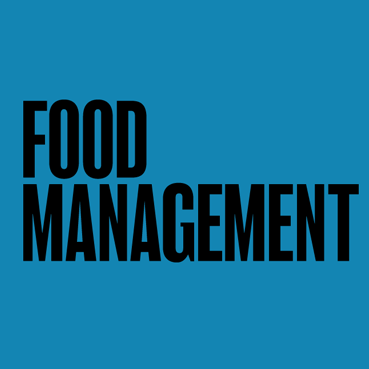Tea for All Tastes
March 1, 2004
FM Staff
Tea is enjoying a real resurgence in popularity. One reason is the growing availability of specialty and ready-to-drink varieties which appeal to today's "younger, hipper" customers. Once they get the tea habit, many continue to be drinkers as their tastes mature.
There's a lot more to specifying tea, particularly raw tea, than is apparent at first. Here are some of the basics.
Grades
Tea leaves go through sieves during processing and are sorted into leaf, broken and fine grades.
Leaf grades, made up of larger leaves, are slower to release flavor and color in brewing than broken or fine grades. Orange Pekoe (pronounced peck-o), Pekoe and Pekoe Souchong are the primary leaf grades.
Broken grades, making up about 80% of the total crop, brew into a darker, stronger tea than leaf grades.
Interestingly, the term Orange Pekoe has nothing to do with the flavor or quality of tea, and everything to do with size.
Orange Pekoe denotes a large tea leaf. Similiarly, Pekoe, Souchong, Broken Orange Pekoe, Broken Pekoe, Broken Pekoe Souchong, Broken Orange Pekoe Fannings, and Fines (sometimes called Dust.) are used to indicate sizes of the tea leaves. (Fines are typically found in commercial teabags.)
Tea Types
Teas get their names from the regions in which they are grown.There are three main types of tea —Black, Oolong and Green—and many subcategories of each.
All of these types come from the same evergreen plant known as Camellia sinensis.What sets them apart is degree of processing and level of oxygen contact.
Black tea is oxidized for up to three hours while Oolong is oxidized for a shorter period. Green Tea, on the other hand, isn't oxidized at all and, after processing, still resembles the chemical composition of a fresh tealeaf.
Each process creates distinct differences in taste and color.
Black Teas are fully "fermented," withered, rolled, fully oxidized and dried.
Assam: Grown in the northeast Assam region of India, it has a bright color with a full-bodied malt taste.
English Breakfast: A full-bodied blend of Ceylon and India teas.
Darjeeling: Called the "champagne of tea," it is said to have a subtle, flowery bouquet and muscatel flavor. Grown in the Himalayan foothills.
Ceylon Breakfast: A blend of fine teas from Sri Lanka, it has a rich, golden liquor and superb flavor.
Keemun: A fine black tea from China with a dark amber color and "sappy" liquor.
Lapsang Souchong: A large leaf China black tea with a distinctive smoky flavor resulting from a unique drying process.
Irish Breakfast: A blend of black teas from Assam, Ceylon and East Africa. It is robust and full-bodied.
Russian Caravan: A blend of China black teas.
Earl Grey: A popular fine black tea flavored with oil of bergamot.
Oolong teas are partially " fermented," withered, rolled, partially oxidized and dried.
Black Dragon: a delicate, fruity tea from the Amoy, Foochow and Canton provinces of China and Taiwan.
China Oolong: A select blend of large-leaf teas from China.
Formosa Oolong: A blend of teas from Taiwan that is known for a peach flavor and aroma.
Green Teas are unfermented, steamed, rolled and dried.
Gunpowder: A clear, yellow-greencolored tea with a slightly bitter-sweet taste. It is grown in China and Taiwan, and is set apart by its round pellet shape.
Hyson: A pan-fired green tea with a fragrant, bitter taste.
Jasmine: A blend of China green
teas and white Jasmine flowers.This produces a light, subtle liquor with a mild sweet flavor.
Sencha: Probably the most common green tea export from Japan.
White tea is a rare variety from China made from the tip of the tea plant.
Herbal "tea" There is a seemingly infinite number of herbal "tea" blends. Many are not tea at all, but are made from flowers and herbs.They are often offered as an alternative hot drink especially for those looking to avoid caffeine.
Brewing and Merchandising
A key ingredient to a good cup of tea is good quality water.Water filtration and conditioning equipment can help reduce particulate matter/scale and lime buildup that can adversely affect the color and taste of tea.
To further protect tea quality and to avoid bacterial contamination, it's important to clean and sanitize your brewing, storage and dispensing equipment on a daily basis.
It's useful to pay special attention to how tea is served and merchandised in your operation.To boost the profit potential of tea, operators can offer several specialty and herbal varieties and promote them on the menu.
Here are guidelines for brewing tea.
Hot tea: Bring fresh cold tap water to a full, rolling boil. Use one teaspoonful of loose tea or one teabag per cup of water. Pour boiling water over the tea and brew three to five minutes.
For iced tea concentrate: Bring one quart of cold water to a rolling boil. Remove from heat and add eight to 10 teabags per quart desired amount. Steep three to five minutes and pour over remaining cold water or ice cubes.
Source: Much of the information was provided by the Tea Association of the U.S.A., Inc.
About the Author
You May Also Like




.jpg?width=300&auto=webp&quality=80&disable=upscale)

